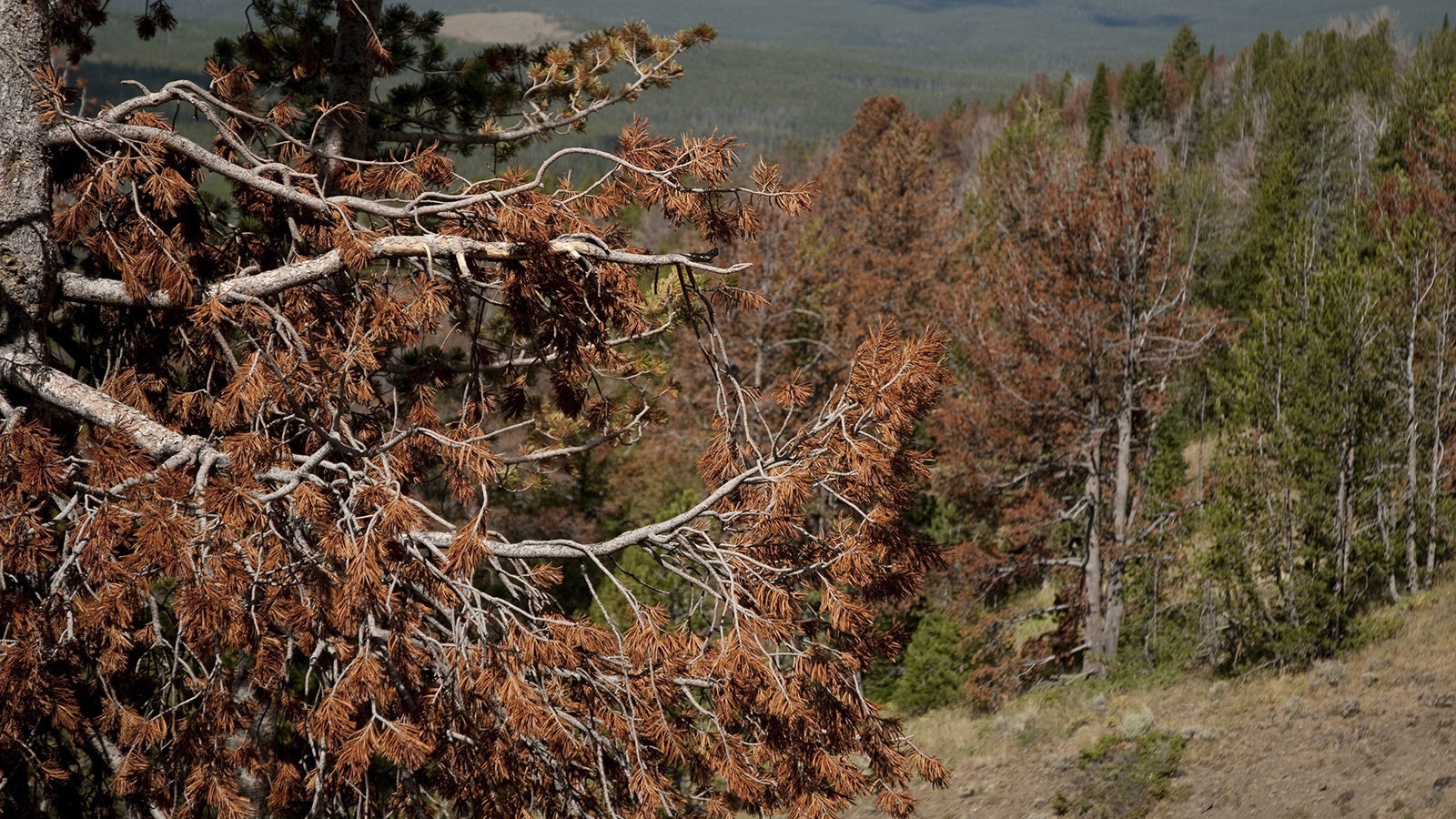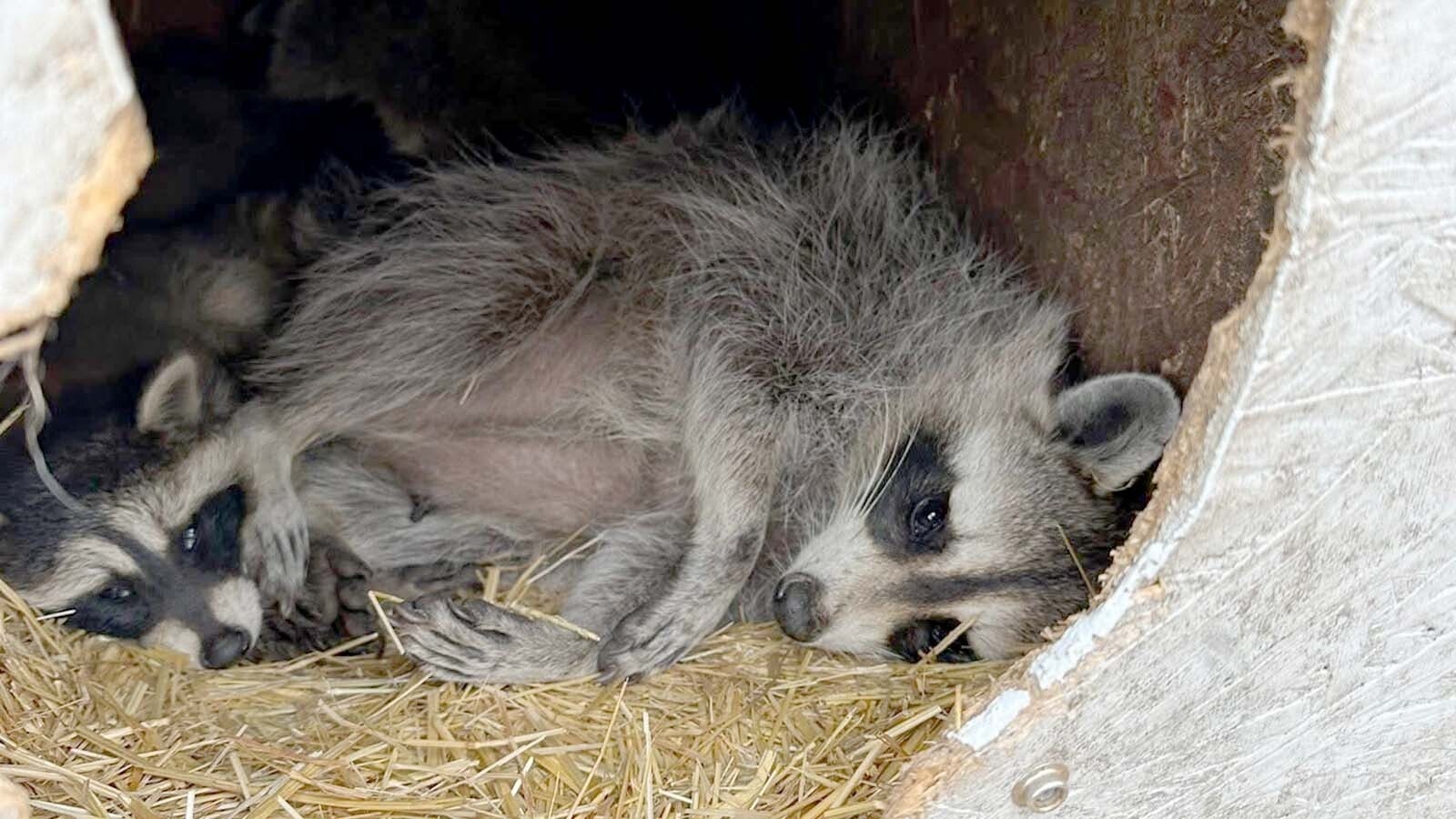For drivers who have deer jump in front of them on busy Colorado highways, officials have simple advice — it might be best to just hit the deer.
In Wyoming, there can be more room to avoid smacking a deer.
But even when plowing into a deer is inevitable, most modern vehicles are well-designed to take the hit, automotive writer Aaron Turpen told Cowboy State Daily.
“Vehicles are made to take that. Cars, pickups and SUVS these days are made to crumple, and it’s a recoverable accident, meaning the vehicle can be fixed,” he said.
The Colorado State Patrol says people shouldn’t try to “save Bambi” if it comes down to a choice between that or causing a chain-reaction pileup.
“The worst choice you can make is to swerve outside your lane or slam on your brakes with vehicles behind you,” Maj. David Rollins, District 4 commander for the Colorado State Patrol, said in an agency statement. “People can end up in serious crashes when they let their emotions take over to save Bambi or his friends.”
Turpen agreed that even on a relatively empty Wyoming road, a sudden, sharp swerve to avoid a deer might not be wise.
“If you swerve too far and go off then road, then you run the very real risk of flipping the vehicle,” he said.
At the very least, rollover accidents total vehicles and can result in serious injuries or death, he added.
The Wyoming Department of Transportation offers similar advice.
"If a collision seems inevitable, don’t swerve suddenly to avoid the animal. Your risk of personal injury may be greater if you do. Brake as quickly as you safely can but keep your vehicle under control and on the road," according to the agency.
A Ruined Radiator
Cowboy State Daily Business and Tourism reporter Renée Jean knows firsthand about the quandary over whether to try dodging a deer.
This summer, she hit a deer while driving a rented Kia Soul at night along a lonely stretch of highway between Hulett and Cheyenne.
The impact wasn’t catastrophic, but it was enough to severely damage the vehicle’s radiator, she said, rendering it undrivable.
“The radiator was just crunched. You could hear the water and steam just pouring out of it,” Jean said.
After the accident, she could drive the Kia only just far enough to get it off the road and out of the path of traffic before calling for help.
Though it was a “pitch black” night, Jean had been tempted to speed. It was late, and she was tired and wanted to get back home to Cheyenne.
But she didn’t speed – because she knew there were lots of animals out near the highway.
She also leaned on her experience from a prior incident on another dark night decades ago, when she was a young mother traveling with her daughter.
On that night, she rounded a corner and “there was an all-black cow in the middle of the road, just standing there, looking at me.”
Jean piled on the brakes as hard as she could.
“I had to stop, or we were going to get killed. And I did, with just a half an inch, maybe, between the car and the cow,” she said.
She was obeying the speed limit that night, which she credits for making all the difference.
During the encounter with the deer this summer, Jean said the animal at first appeared to be dodging her vehicle on its own.
But then, at the last moment, it suddenly changed directions, making a collision inevitable.
Jean surmised that the deer was following its natural instincts, zig-zagging to avoid a predator.
The deer limped away and went over by a roadside fence, she said.
When an officer responded to the scene, he approached the deer, thinking he was going to have to finish it off with his duty weapon. But the deer got up and ran away, Jean said.
Antilock Brakes, The Good And The Bad
Jean said she hit her brakes before hitting the deer. But the antilock braking system kept the wheels from locking up and stopping as suddenly as an older car might have.
On the night long ago when she nearly hit the cow, Jean said, the car she was driving did not have antilock brakes. She’s glad it didn’t, but she recognizes their value, especially on urban or slick roads.
Turpen agreed that modern antilock systems help drivers steer through a sudden, hard braking if an animal jumps out in front of them.
But even with an antilock system, piling on the brakes can cause a skid if the road is wet, snow-covered or icy, he said.
Depends On The Size Of The Critter
Whereas just about any passenger vehicle can take a deer hit, Wyoming has other animals that can make collisions far more dangerous, Turpen said.
In smaller vehicles, colliding with elk, Moose, horses or cattle could prove disastrous, he said.
That’s because a larger animal can go up over the hood of a smaller, lower vehicle and slam into – and possibly through – the windshield, he said.
Large pickups or SUVs – especially those outfitted huge bumpers or grill guards, are safer, if it comes down to plowing into something moose-sized, Turpen said.
He also shared a humorous story about how large animals can be dangerous, even when a vehicle is stopped.
He said years ago he was driving a small car in Utah, when he had to stop for a rancher who was rounding up some horses that had gotten loose on the highway.
“All of the sudden, one of the horses turned and looked at me. And then it just ran right up on the hood and right over the top of the car,” he said.
Luckily the horse wasn’t shod (outfitted with metal horseshoes), he said. That minimized the damage, which the rancher paid for.
He added that the bottom line is, Wyomingites can’t ever take for granted that a deer – or something much larger – might jump out in front of them.
It’s best to slow down if visibility is poor, he said.
“Even if the speed limit is 65, that doesn’t necessarily mean you need to go that fast, if you know there’s animals out there,” he said.
Mark Heinz can be reached at mark@cowboystatedaily.com.





